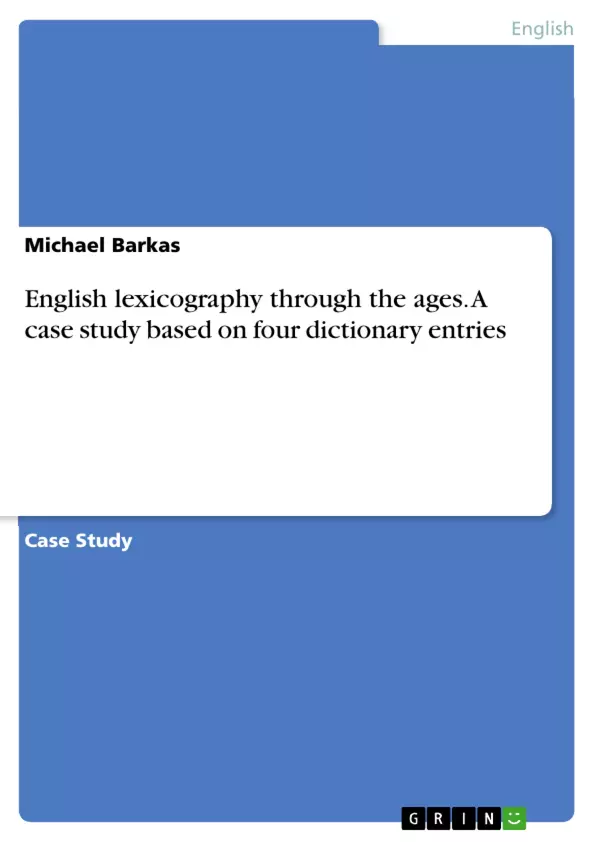The history of the English lexicography offers through its numerous works that have survived up to our days a great opportunity to observe not only the semantic development of words, but also their layout in a page, from their fonts' styles and sizes to the structure of their meanings and the later acquisition symbols and abbreviations. Online availability of historical dictionaries enables us to study comparatively and diachronically the curriculum vitae of words, through which we can reconstruct a morpho-semantic overview that links past with present usages and meanings including their semantic development (e.g. polysemy, shifted meanings etc.), spelling variations, etymological suggestions and other valuable pieces of information. In many cases, due to the scientific achievements and rapid changes that occur in the human societies, it is possible to observe how social and cultural changes may have been captured within a particular definition or an etymological explanation.
The current study focuses on the analysis of four dictionary entries. How do the meanings of the selected words evolve semantically and what does each lexicographer offer to the reader as we approach modern times? Due to the restricted length available for this paper, the early seventeenth century has been set as starting point for this work; more precisely Robert Cawdrey's Table Alphabeticall (1604), a most well-known work regarded today as the first monolingual English dictionary. A total of ten important dictionaries up to the digital OED will be used. The aim is to demonstrate through a comparative approach what semantic changes have taken place throughout the definitions, what has survived or become obsolete over time and what is the semantic status of today's definitions within the selected headwords.
Inhaltsverzeichnis (Table of Contents)
- Introduction
- Methodology
- The authors and their works
- EME dictionaries: The seventeenth and eighteenth centuries
- Samuel Johnson's Dictionary of the English Language (1755)
- The nineteenth century
- The twentieth century
- The authors and their works
- Content analysis
- Selected entries
- Secular
- Savannah
- Drug
- Tablet
- Entry layouts
- EME layouts
- Johnson's layouts
- Nineteenth-century layouts
- Modern entries: NED and Merriam-Webster
- Selected entries
- Conclusion
Zielsetzung und Themenschwerpunkte (Objectives and Key Themes)
This study aims to analyze the semantic evolution of four dictionary entries through a comparative approach, examining how their definitions have changed over time from the early seventeenth century to the present day. The study also explores the layout of dictionary entries and their components, tracing the evolution of presentation styles.
- The semantic development of selected headwords.
- The evolution of dictionary entry layouts and their components.
- The impact of social and cultural changes on word definitions.
- The interplay between British and American English in lexicography.
- The role of etymology and historical context in understanding word meanings.
Zusammenfassung der Kapitel (Chapter Summaries)
The introduction provides an overview of the history of English lexicography and the motivation for this study. The methodology section outlines the chosen dictionaries and the two levels of analysis: semantic development and entry layout. Chapter 3 focuses on the content analysis of four selected entries, examining their semantic evolution and comparing their layouts across different periods.
Schlüsselwörter (Keywords)
English lexicography, dictionary entries, semantic development, etymology, entry layout, Early Modern English, Samuel Johnson, Oxford English Dictionary, Merriam-Webster, British English, American English, diachronic analysis, comparative analysis.
- Citar trabajo
- Michael Barkas (Autor), 2015, English lexicography through the ages. A case study based on four dictionary entries, Múnich, GRIN Verlag, https://www.grin.com/document/351258



